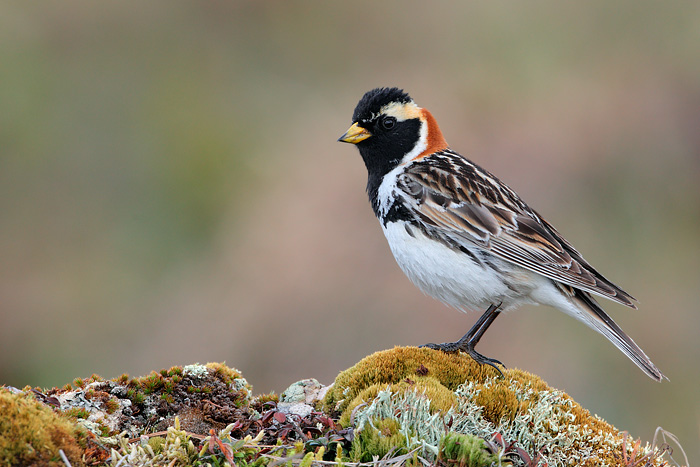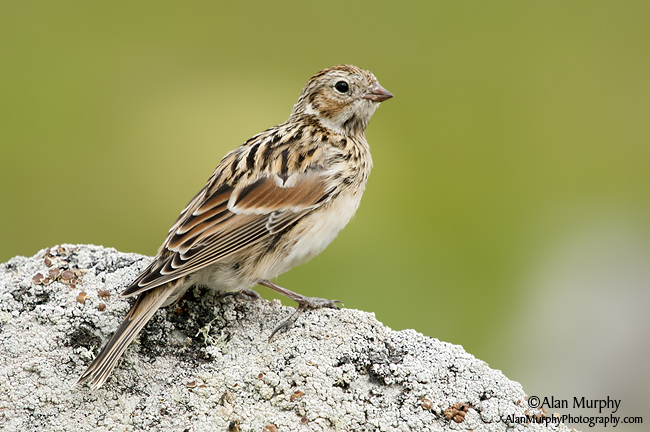
Calcarius lapponicus
TAXONOMY
Fringilla lapponica Linnaeus 1758, Lapland. Two subspecies.
OTHER COMMON NAMES
English: Alaska longspur, lapland bunting; French: Bruant
lapon; German: Spornammer; Spanish: Escribano Lapуn.
PHYSICAL CHARACTERISTICS
5.5–7 in (23.5–17 cm); 0.95 oz (27 g). Lapland longspurs are
large, strong-flying sparrows. The sexes differ in color. Breeding
males have a black face outlined with buff white stripes
above the eye and behind the ear, the back of the head and
nape are bright rusty, and the bill is bright yellow with a black
tip; they also have a black bib. Females have a buff stripe over
the eye and buff ear coverts that are outlined in black, and the
throat is blackish. Juveniles have streaking on the crown, in the
buff line over the eye, and on their underparts.
DISTRIBUTION
Circumpolar. In Eurasia, they breed from Finland west across
northern Russia and Siberia to the Kamchatka Peninsula and
winter from northern Europe and northern Asia south to the
British Isles, France, southern Russia, Mongolia, and northern
China. In North America, they breed from the Aleutian Islands,
Alaska east across arctic Alaska and Canada (including
the arctic islands) to the coast of eastern Greenland and winter
from the central Great Plains and southern Wisconsin, southern
Ontario, and central Nova Scotia south to the Gulf Coast
and northern Florida. C. l. alascensis breeds in north and west
Alaska including the Aleutian Islands and islands in the Bering
Sea. C. l. coloratus breeds in eastern Siberia, the Kamchatka
Peninsula, and Commander Islands, and occasionally east to
Attu Island, Alaska.
HABITAT
They are generally the most common birds of the high arctic
where they can be found in a variety of tundra habitats. During
migration and winter, they can be found in fallow fields, short
pastures, and along beaches.
BEHAVIOR
Males arrive on the breeding ground before females and start
defending and advertising a territory by giving a flight song
and chasing intruders from their territory. They also sing from
a rock, the top of a sedge tussock, or phone wires. During
courtship, the pair engages in reciprocal chasing. During migration
and winter, they are often found in large flocks, sometimes
of more than a million individuals. They may also be
found with horned larks (Eremophila alpestris), pipits (Anthus),
other longspurs, or snow buntings (Plectrophenax nivalis).
FEEDING ECOLOGY AND DIET
They feed on the ground and, in summer, they eat insects
and other invertebrates. In winter they eat primarily seeds and
grain.
REPRODUCTIVE BIOLOGY
Monogamous. The nest is a cup of rather coarse sedges placed
in a depression in the ground. They lay one to six (usually five)
eggs; incubation requires 10–14 days, and the young fledge after
8–10 days. Both parents feed the young. Nesting takes
place from late May through early July.
CONSERVATION STATUS
Not threatened.
SIGNIFICANCE TO HUMANS
None known.
Photo Gallery of - Lapland longspur




 Animalia Life
Animalia Life